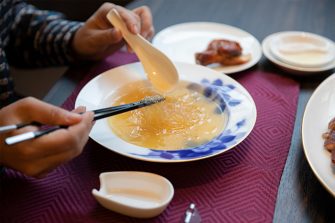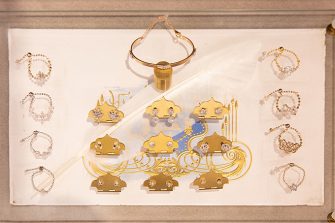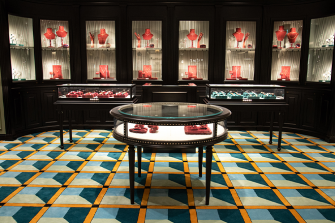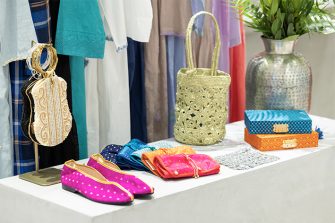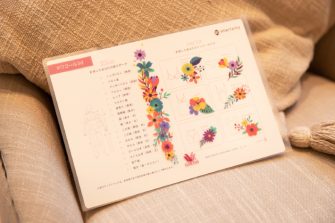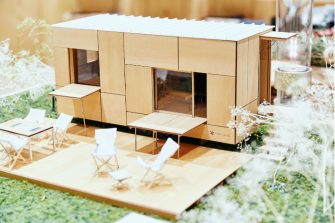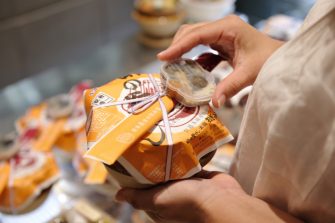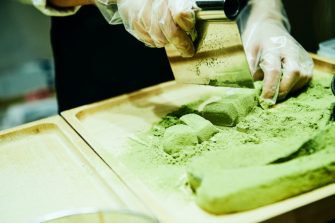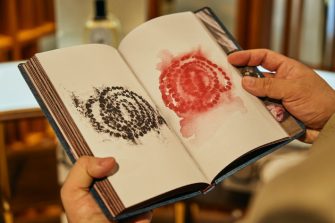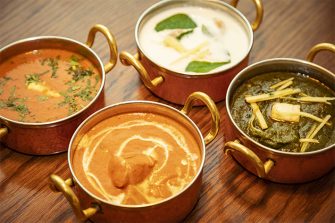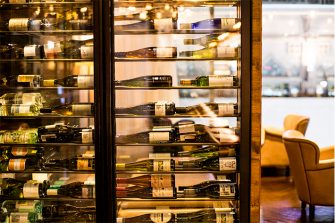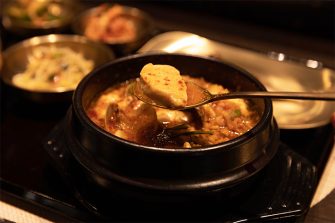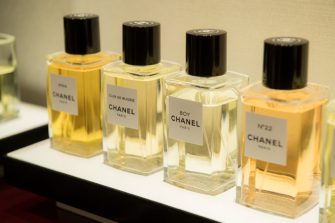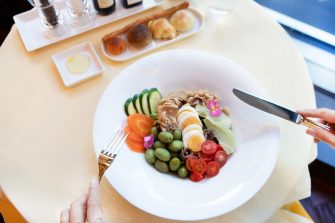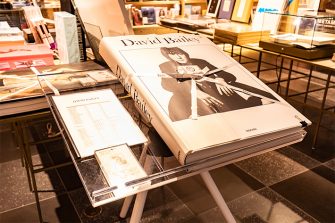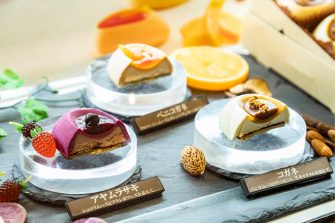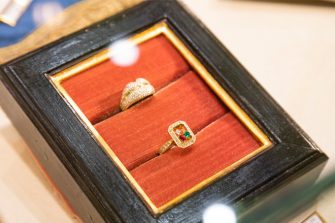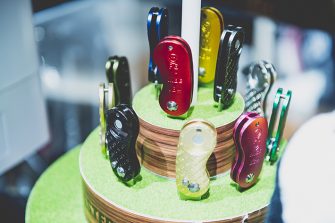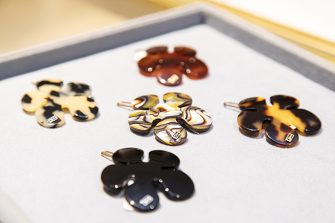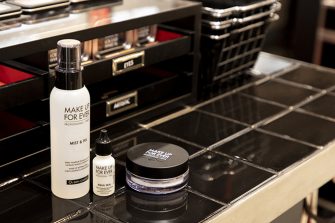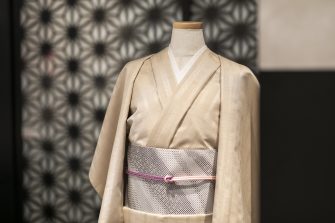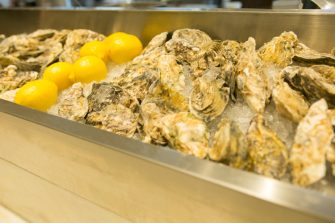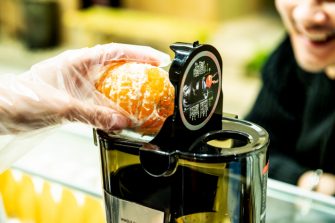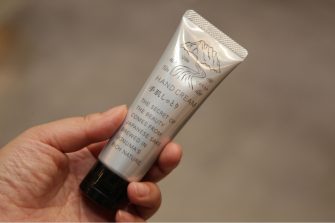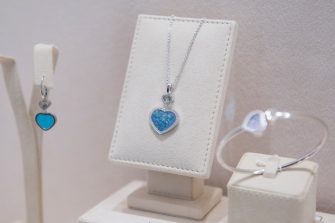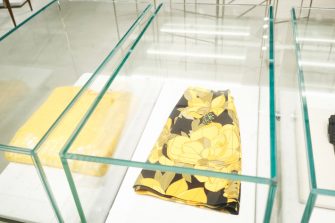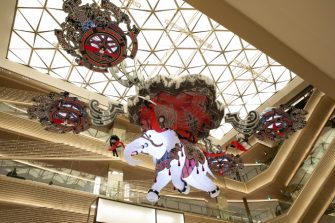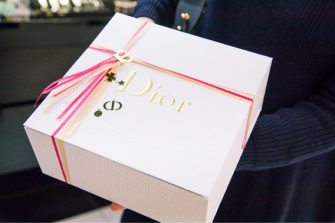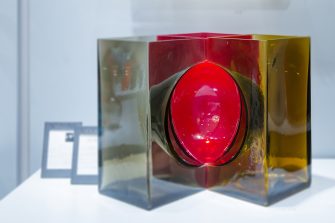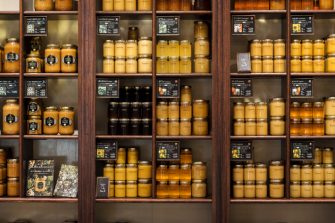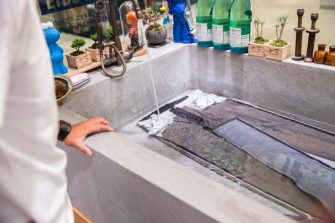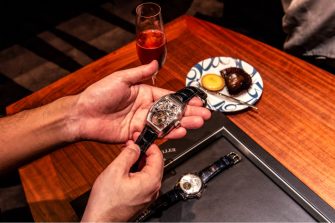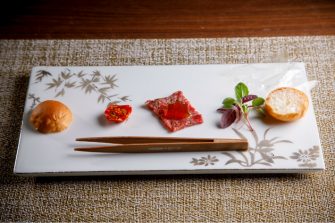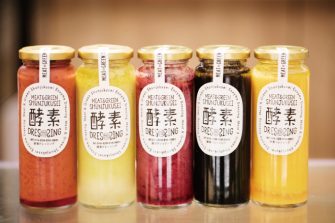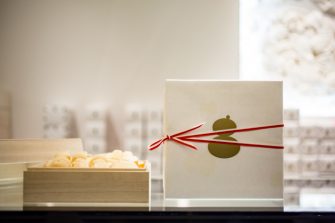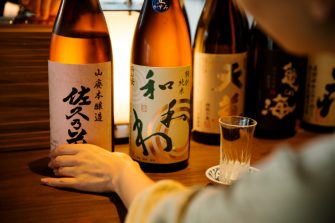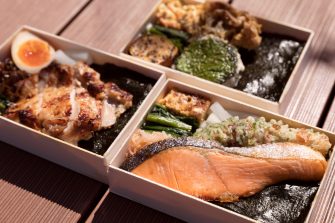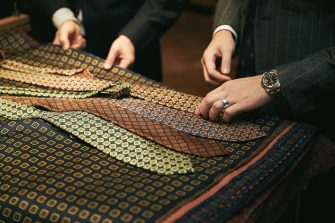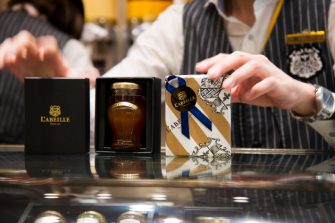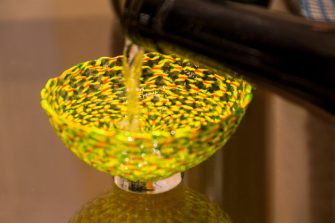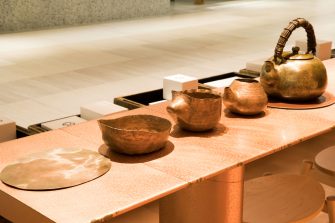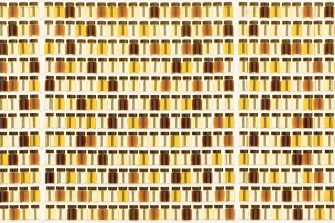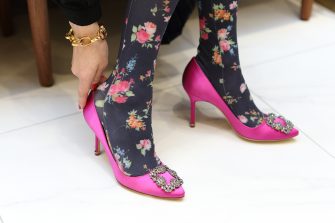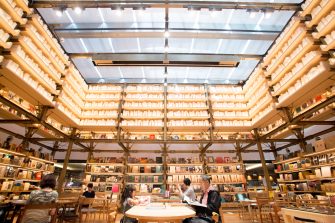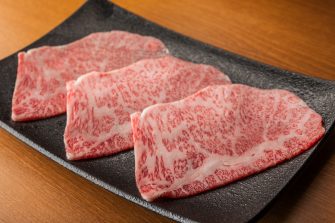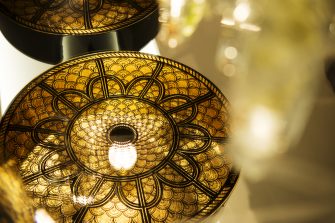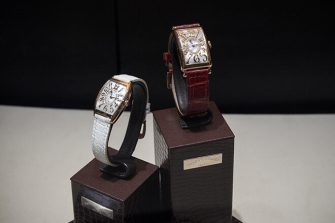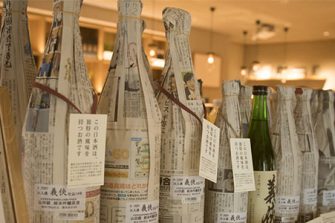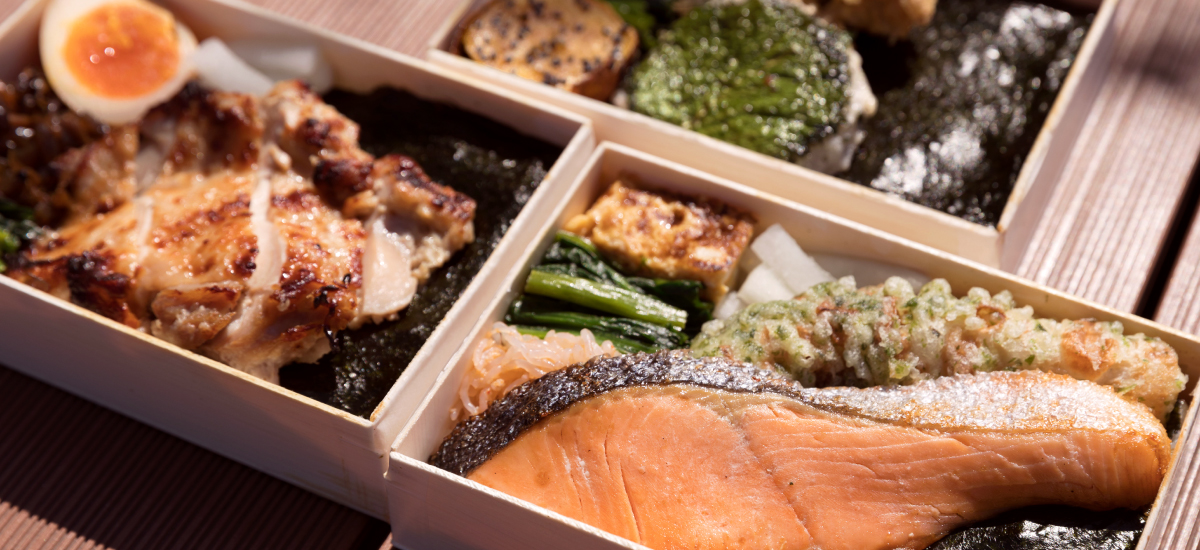

GINZA SIX EDITORS
时尚、珠宝&手表、生活方式、美容、食品…
精通各种类型的个性丰富的编辑们,在GINZA SIX上闲逛
记述走路发现的乐趣。
从早上到晚上! 享受GINZA SIX,吃饱了 Morning to Night! A Day’s Full Trio of Meals (and More) at GINZA SIX
小石原遥
GINZA SIX EDITORS Vol.34
呆一天也不会腻!
回想起来,这是第一次访问GINZA SIX时的第一印象。
那么,一天好好地闲逛吧。
从早饭开始,午饭,晚饭,一起承蒙您的关照!
梦中的“GINZA SIX全没入路线”。

因为不好好吃早饭就无法打开开关的体质,所以最先去的是“HOUSE OF DIOR GINZA”。这是在5楼迪奥提倡的“Arl Do Vieval”,也就是说不留余力地传达生活方式的特别空间。其中的4层有与皮埃尔・爱尔梅合作的《Cafco Dior by Pierre Hermé》。而且这里是GINZA SIX中珍贵的能吃早餐的店。用高雅的迪奥灰色色调组合而成的空间,彩色粉笔的可爱大提琴是重点。在吃早饭之前就已经很出神了。
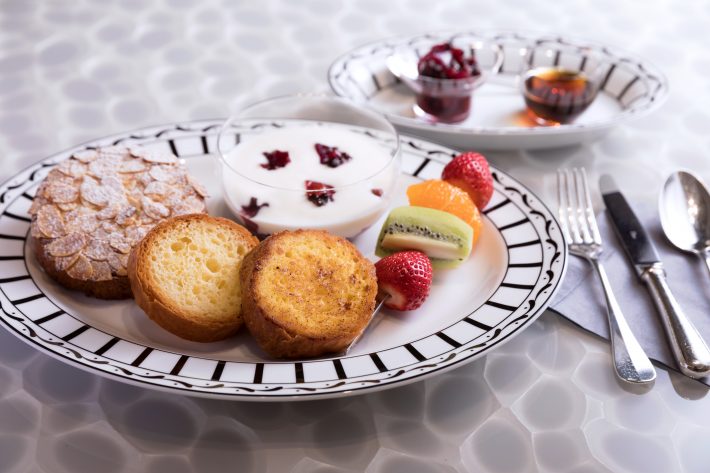
只有10点30分~13点30分之间才能订购的“小甜甜圈套餐”2400日元(以下均不含税价格),是将杏仁糖浆和橙花水浸入后烤制而成的清爽香味的“bostc”,以及使用鰤鱼香喷喷喷喷喷喷喷喷喷喷的面包(法式吐司)、酸奶是樱桃和洋梨、干果……这是一款让眼睛华丽&舌头美味的阵容(※内容有一部分变更的可能性)。
漂亮的板块和卡特拉利,当然也是迪奥的东西。这是世界上第二家店,也是日本首家“在Dior吃早饭”的地方。另外,店内使用的餐具也可以在同一楼层购买。

一起享用的饮料,选择了以苏伊牛奶为基础的“反光沃尔兹埃罗斯”1200日元。从颜色上来说,艾玛的风格满分,弗兰沃斯和玫瑰的组合让人联想到皮埃尔・艾尔梅的名作《伊斯帕汉》,是一种华丽的风味。
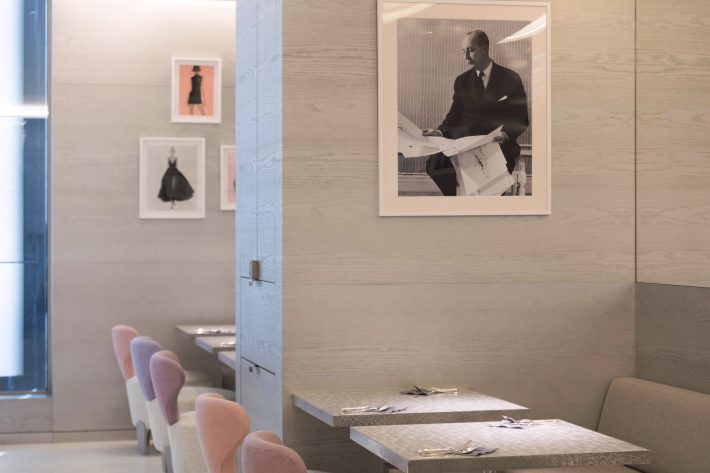
墙壁上还装饰着穆迪奥的肖像和设计画,是一个能保养眼睛的美好空间! 即使只是来吃早饭,也一定要穿上礼服来。白天除了有艺术性的“大甩卖沙拉酱”(盛盘子里的甜点)之外,还可以喝饮料、酒精等。
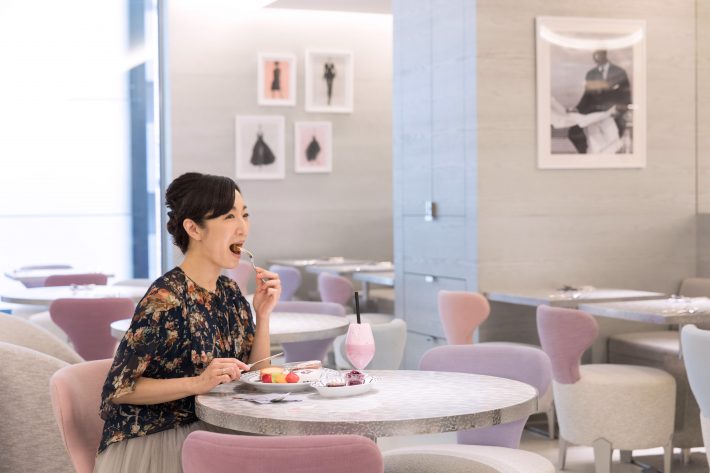
适合这种氛围的优雅品味的地方,不知不觉食欲就先行了,大口敞开了,真是不好意思。憎恨食物作家的性……!

那么,悠闲地吃了早饭之后,一口气就是午餐时间了! 对面是自开业以来一直在排队的B2食品楼层的“刷毛海苔弁登山”。以平民派便当的代表性“海苔便当”的最高峰为目标,“登山”。真是太棒了。
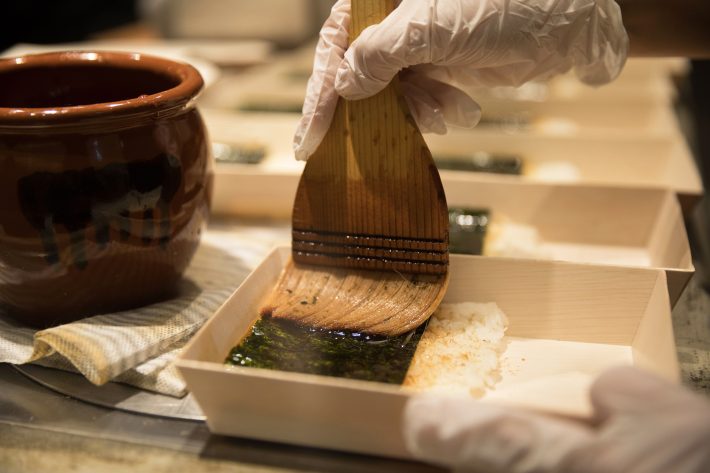
在等待顺序的期间,可以看到做便当的样子,这也是一种乐趣。看,用刷子把酱油做成海苔便当! 店名没有虚假。海苔是选择柔软的最采摘的有明海苔,而且还有被称为“青混合”的青苔的海苔,充分涂上自家制的酱油就完成了。
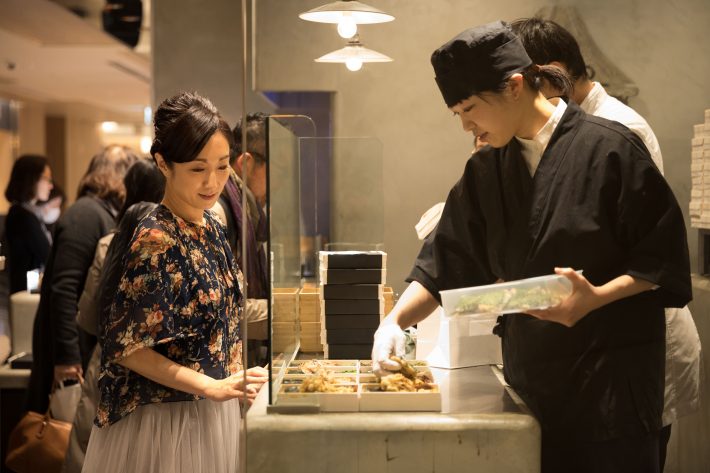
海苔便当有三种。如果工作人员凝视着装着的小菜,就会变得想吃,这就是人情。那么,今天要哪个呢?……!?
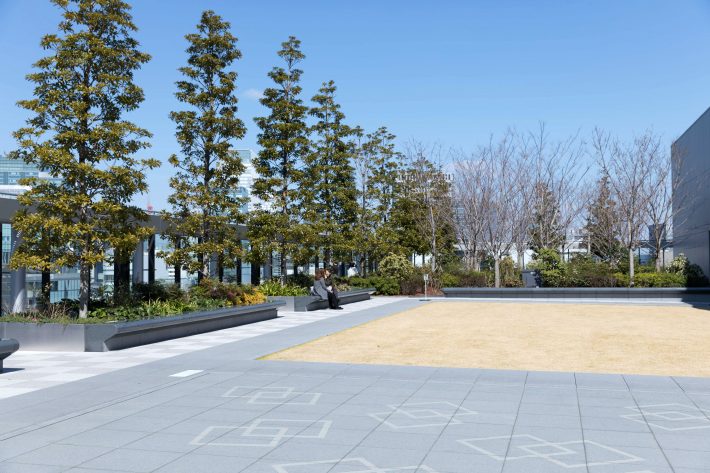
带着平安得到的刚做好的便当登上去的是“GINZA SIX”的所谓“最高峰”,屋顶的“GIIZA SIX花园”。仿佛忘记在银座正中央的庭院,由森林区、水盘区、草坪区、回游广场组成,每个区域都有不同的表情。以杜鹃花为首,开花时期不同的樱花也种了几种不同的樱花,特别是初春,每次来访都会有不同的表情来享受。
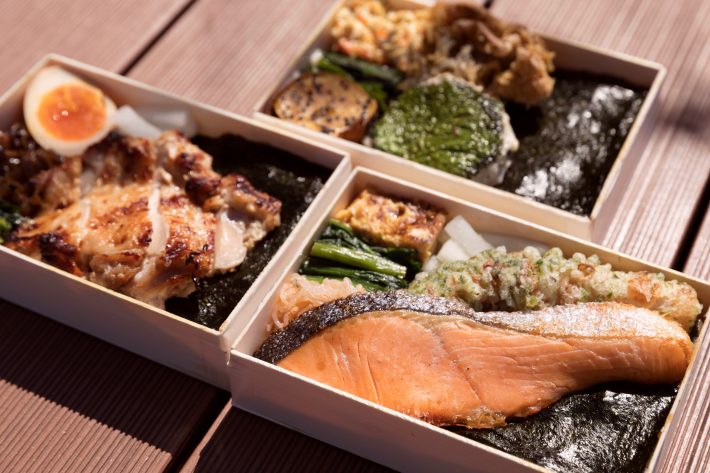
挤不完,最终还是填充了3种。发挥了吃力。……。非常棒的鲑鱼和鱼糕的海岸炸鸡块(最喜欢的东西!)“海”和揉进盐曲做成柔软的鸡照烧和带有味的煮鸡蛋很开心的“山”,还有以莲藕大叶年糕为主角的舞茸天妇罗和炒豆腐,以及田地的恩惠满满的“田地(各1080日元)”一句话虽说是“海苔便当”,但由于小菜的变化,给人的印象也会随之改变。
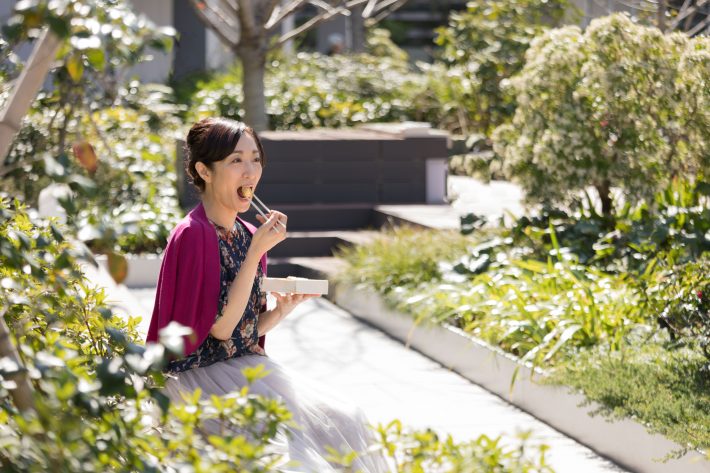
晴天的天空下,大口吃的海苔便当是特别的! 品尝沾了酱油的海苔和米饭,以及手工制作的热乎乎的菜,心情舒畅地把便当吃完后,直到晚饭为止都会一个劲地在GINZA SIX内闲逛。6F在“银座茑屋书店”检查在意的书籍和杂志,在时尚楼层物色春物(注意散财!)。还有,如果在B1F的美容楼层巡逻的话,新颜色和限定品的检查也会有所进展。在发型沙龙和化妆品品牌的护发展台上也有维护。要是预约就好了!
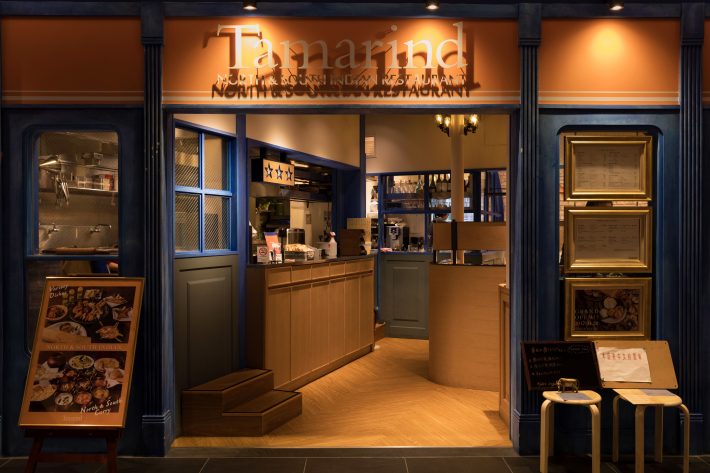
黄昏时分,差不多饿了! 最近,人们对香料的组合方法和功效越来越感兴趣,时常去印度料理教室,咖喱的爱也越来越多,所以今天去了6楼的“Tamalind”。这家店可以品尝到丰富的北印度料理和清爽香料的南印度料理,是非常珍贵的店。
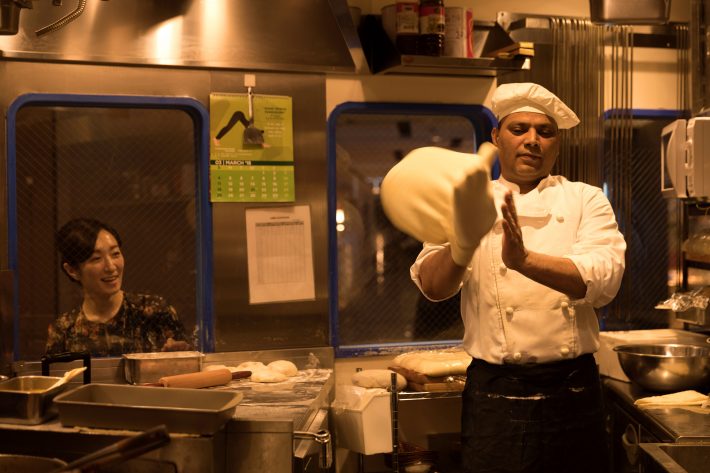
厨房里正好像手帕一样,正在制作极薄的面团面包。把面团扔到空中,用拳头伸长,整理形状。
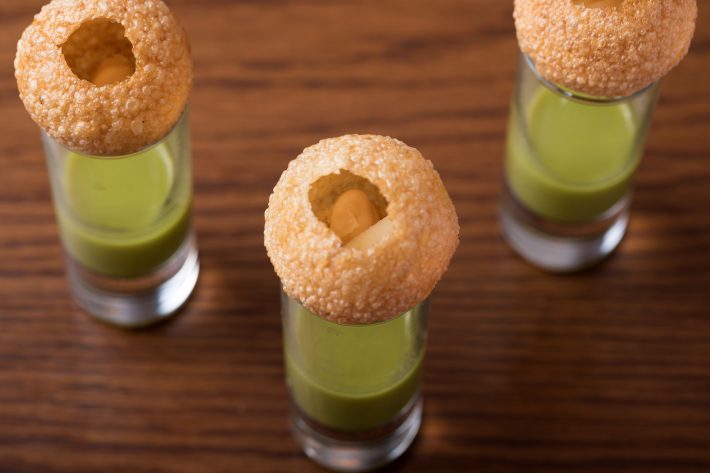
一家店的配餐费是“帕尼普利”600日元。因为是小摊上的经典小吃,所以在炸好的球状面团里加入了土豆和洋葱,然后倒入下面的液体,咔嚓咔嚓地吃。吃得很好好像需要一些诀窍,但是用香菜和薄荷的风味来吃的话胃就会一下子清爽。那么,迎接咖喱的准备是万事!
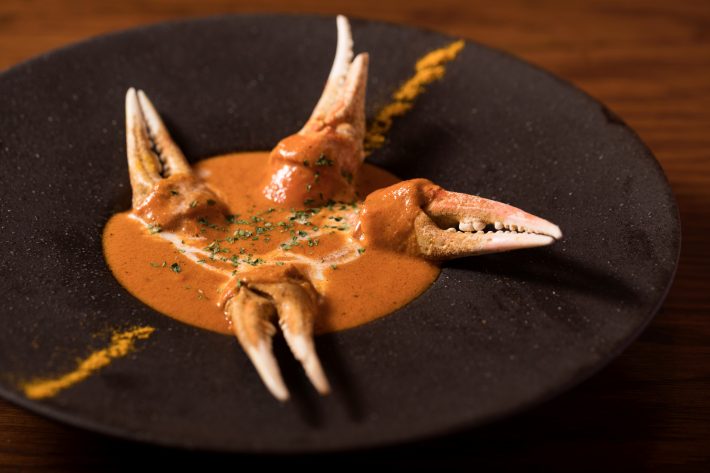
“虽然在印度不怎么吃螃蟹,但是我觉得和虾很搭的黄油马萨拉的味道和螃蟹很搭”,“螃蟹黄油莎拉”1600日元(4根)。将北印度系的浓厚酱汁充分裹在螃蟹爪上……原来如此,这个确实很合适!
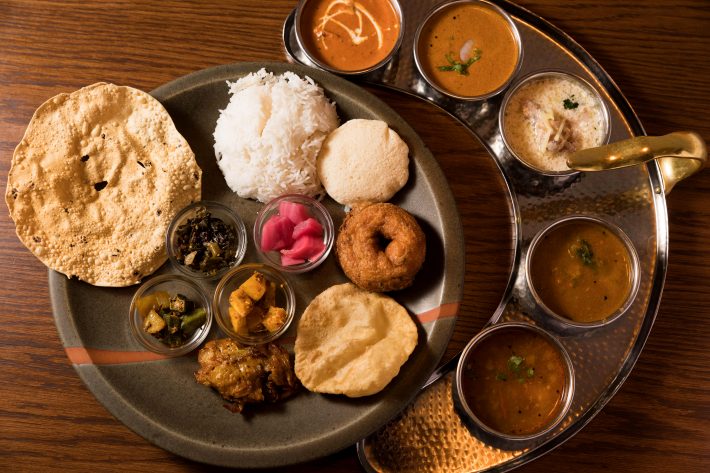
主角“玉兰米勒斯”2200日元由南印度料理构成。鸡肉、羊肉、虾的咖喱配有桑巴尔(豆粉薄的仙贝、和田(油炸甜甜圈)等“碳水化合物”队伍,还有烤面包(薄豆粉薄煎饼)、和田(油炸甜甜圈)etc.的“碳水化合物”队伍。此外,色彩鲜艳的泡菜也会增添色彩。
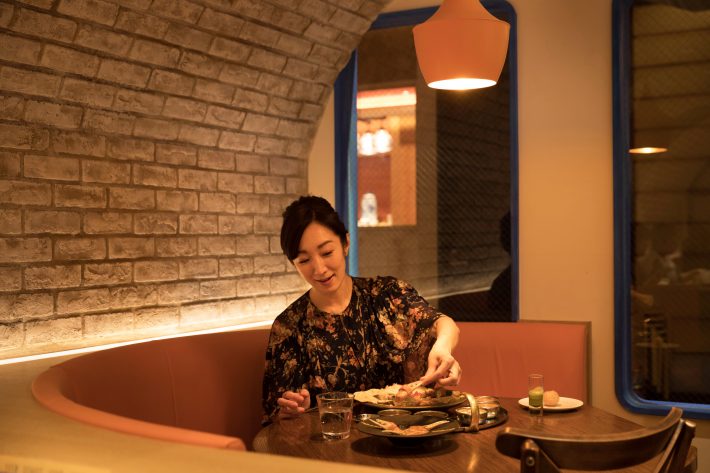
米勒斯可以说是“定食”。可以尝试各种各样的咖喱和碳水化合物类的组合,也可以在空闲时间用辣酱油和泡菜使嘴巴清爽,更进一步说的话,即使混合了一起吃,味道也会变得多层,很好吃。很多东西坐在板子上的话,哪个和哪个组合起来!? 虽然可能会犹豫,但是自由地享受就OK!是啊。
Text:Haruka Koishihara Photos:Kayoko Ueda Edit:Yuka Okada
My first thought the first time I visited GINZA SIX was: I could spend the whole day here and leave wanting more! Now, here I am, with plans to do just that.
Breakfast, lunch, and dinner, all at GINZA SIX—I’ll call it the GINZA SIX Deep Dive Culinary Experience.

I’m the type of person who definitely has to have breakfast to get going, so I head first to House of Dior Ginza. This distinctive space, divided over five floors, eloquently conveys the art de vivre lifestyle trumpeted by Dior. The fourth floor, Café Dior by Pierre Hermé, features a collaboration with Pierre Hermé, otherwise known as the Picasso of Pastry. It’s one of the few places at GINZA SIX to offer a breakfast menu. Featuring a refined color scheme of gray Dior tones, the place is accented with inviting pastel chairs. I’m spellbound even before breakfast arrives.

The Petit Déjeuner Set (2,400 yen; all prices before tax), available from 10:30 a.m. to 1:30 p.m., includes baked bostock steeped in almond syrup and orange flower water for a pleasing fresh aroma, fluffy, richly flavored pain perdu (French toast) made with brioche pastry, and yogurt with a homemade compote of cranberries, pears, and dry fruit—it’s both beautiful and delicious. (Set items subject to change.)
The wonderful plate and cutlery are, of course, by Dior. The café is the second anywhere and the first in Japan, a unique spot for fulfilling a dream of breakfast at Dior. The dishware used in the café is available for purchase on the same floor.

For my drink, I choose the soy milk–based Les Framboises et Rose (1,200 yen). The colors are straight from Pierre Hermé’s palette, and they easily win my highest marks. The combination of raspberries and rose has brilliant flavors reminiscent of the renowned Pierre Hermé’s Ispahan.

The walls are adorned with a portrait of Mssr. Dior and design drawings—a wonderful space that’s easy on the eyes and something to inspire you to get dressed up, even if you’re only coming for breakfast. The artistic Dessert à L’Assiette (dessert arranged on a plate) is served throughout the rest of the day alongside drinks and spirits.

I really should take in the atmosphere here with dignity and restraint, but my appetite gets the best of me, and—I’m sorry!—I open my mouth wide. By his or her very nature, a food writer stands helpless against such baser impulses.

After finishing a leisurely breakfast, before you know it, it’s lunchtime. I head to Noriben Yamanobori on the food floor, the second belowground floor, which has never not had a line since it opened. The Yamanobori (“mountain climbing”) name derives from its ambitions to produce the pinnacle of noriben, bento box lunches with nori (seaweed) on rice long enjoyed by ordinary people everywhere. It’s a wonderful name that expresses the establishment’s aspirations.

What’s fun, too, is that you can see them making the bento while you wait in line. Look, they’re brushing soy sauce onto the seaweed! The name doesn’t deceive. The nori is first-pick, soft seaweed from Ariake Sea. Beyond that, they select a variety with green laver attached called aomaze, which is then liberally coated with special homemade soy sauce diluted with dashi stock.

The noriben comes in three varieties. While you’re watching the staff fill the boxes with food items, it’s only natural to want to eat them all. So which one will I have today?

I take the fresh-made bento I just scooped up and climb to the pinnacle of GINZA SIX itself, the rooftop GINZA SIX Garden. An assemblage of zones of trees, water feature, a lawn, and a strolling plaza, each with a different atmosphere, offers a place to make you forget you’re in the middle of Ginza. You’ll find multiple varieties of cherry blossom trees here, including Kawazu cherry. They come into bloom at different times. Each time you visit, especially in spring, you’ll enjoy a different aspect of the garden’s beauty.

My gluttony getting the better of me, I decide not to decide and wind up with all three types. There’s the Sea, a splendid slice of salmon that looks ready to burst from the box, with deep-fried nori-battered chikuwa (an absolute favorite!); the delightful Mountain, tender teriyaki chicken rubbed with shiokoji, a Japanese condiment, and seasoned boiled egg; and the Field, packed full of the Earth’s bounty, including shiso-topping lotus root cake, maitake mushroom tempura, and stir-fried tofu (1,080 yen each). This variation in food items upends my ideas of the tried-and-true noriben lunch.

A noriben lunch I can eat through my saucer-wide mouth under the bluest of skies is something special indeed. Enjoying the soy sauce–soaked nori and rice and the warm hand-prepared food items, I finish off my lunch with a sense of great satisfaction. Now I’m ready to enjoy wandering GINZA SIX until dinnertime. I browse books and magazines at Ginza Tsutaya Books on the sixth floor; search for spring fashions on the fashion floor (careful not to go overboard!); then patrol every nook and cranny of the beauty floor, the first belowground floor, looking for new colors and limited-edition items. You can stop in at a hair salon or cosmetics brand treatment booth for some maintenance and upkeep, should you so choose. I should have made a reservation!

It’s around sundown now, and I’m famished. I’ve taken a growing interest in the possibilities of spice combinations, and I’m coming to love curry more and more, so much so that I’ve taken the occasional Indian cooking class. So, today, I’m headed to Tamarind on the sixth floor, a restaurant unique in allowing diners to enjoy both rich northern Indian fare and crisp, light, and spicy South Indian cuisine.

In the kitchen, I happen to see the chef preparing a flatbread, thin as a handkerchief, called rumali roti. The dough is shaped by tossing it into the air and spread by hand.

The restaurant’s most recommended appetizer is panipuri (600 yen). This is a standard snack food at food stalls. The crisply fried batter balls are filled with potatoes and onions and the liquid below is poured in, allowing the whole thing to be eaten in one wide bite. It may take practice to eat skillfully, but the pairing of coriander and mint flavors is instant refreshment for the palate. Now, I’m ready for curry!

This is Crab Butter Masala (1,600 yen; four pieces). “We don’t eat crab much in India,” the chef tells me, “but I thought the flavor of butter masala, which goes well with prawns, would be perfect for crab.” So crab claws with a rich northern Indian sauce… and he’s right, it does go perfectly.

My main course is the Tamarind Meal (2,200 yen), composed of South Indian fare. Joining the soupy team of chicken, mutton, and prawn curries, sambal (a light curry of beans and vegetables), and rasam (a tart and spicy soup) is the carb team of puri (deep-fried bread), papadum (a thin, crisp gram bean flour cracker), vada (Indian doughnuts) and more. The meal is garnished with a colorful assortment of pickles.

With an Indian meal like this, you can try various combinations of curry and carbs and refresh the palate in the entr’acte, as it were, with rasam or pickles. If you like, you can combine various items to create layers of flavors—also delicious. With so much on a single plate, you might have trouble deciding what to combine with what, but you’re perfectly free just to have fun combining anything with anything.
Text:Haruka Koishihara Photos:Kayoko Ueda Edit:Yuka Okada
小石原遥
食物撰稿人。1972年出生。以杂志为中心撰写食物的报道。同时也是杂志《东京日历》的编辑。近著是《自己史上最多的饭菜》(Magazine House)。


